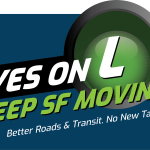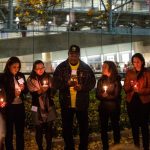Help shape the future of Slow Streets this fall
In response to the pandemic, Mayor Breed signed an emergency order to create more space for San Franciscans to safely recreate. SFMTA rolled out 47 miles of ‘Slow Streets’ around the city, limiting traffic to neighbors, deliveries, and emergency vehicles in order to provide safe space for people.
Today, a handful of Slow Streets have been made permanent (Sanchez Street, Shotwell Street, Lake Street, Golden Gate Avenue). But a much bigger conversation about the future of Slow Streets and the broader program is now at play.
Mayor Breed recently shared her vision for Slow Streets: “We need to look at a broader, connected network…the purpose of the network will be to provide safe routes for everyone in the city to get around.” The Mayor also recognized that “certain lower income communities and what they want [has been] left behind. We need to change that.”
The future of Slow Streets will be on the agenda at a special SFMTA Board meeting later this fall (NOTE: This was previously scheduled for October).
We hope you’ll join us in tuning in and speaking out for a strong, lasting Slow Streets program that will really contribute to the City’s traffic safety, climate, and equity goals. You can attend via phone or in-person at City Hall; we’ll reach out when we have the final date of the hearing.
We’ve been working hard with partners to define what a strong Slow Streets program would look like. Over recent months, Walk SF has been meeting with the advocacy groups including the San Francisco Bicycle Coalition, Livable City, Parks Alliance, KidSafe SF, Senior & Disability Action, as well as some neighborhood groups who haven’t experienced Slow Streets (Tenderloin Community Benefit District, African American Arts and Cultural District, and Excelsior Action Group).
Our collective proposal for the future Slow Streets includes: 1) clear goals for traffic volume, speed, and accessibility to ensure street designs keep people of all ages and abilities safe; 2) a focus on equity priority communities, with a range of ways for to ensure the needs and desires of the community are reflected; and 3) a vision of a how a seamless network of safe streets can successfully connect commercial corridors, parks, senior housing, healthcare, and other key destinations.
This is a defining moment for Slow Streets; I hope you can tune in and speak up!
Banner image by Oliver Walter




